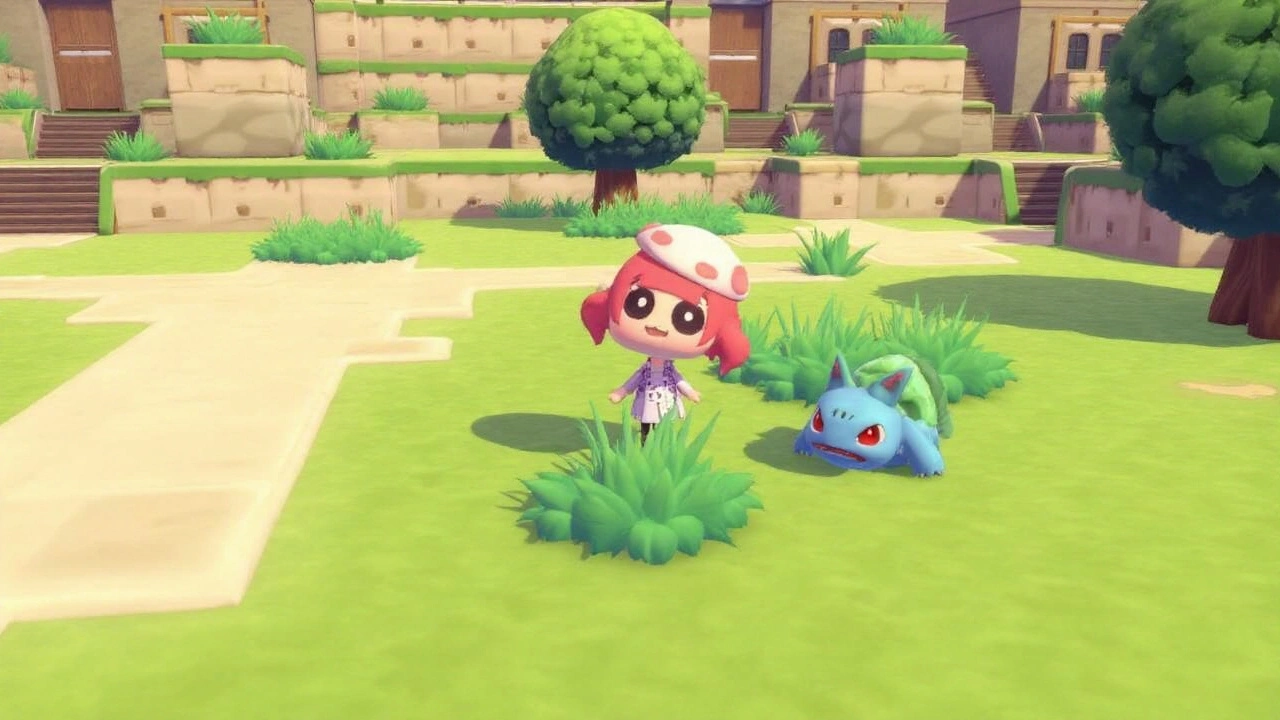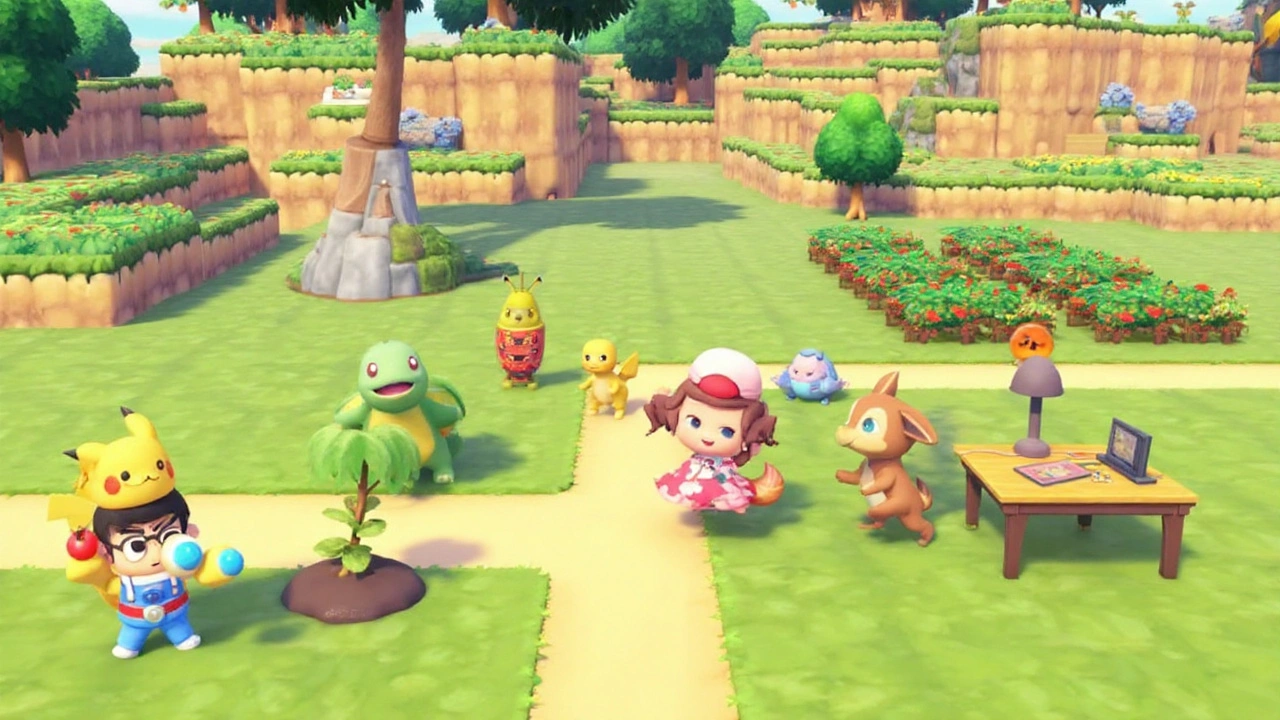Pokémon Pokopia brings an Animal Crossing-style life sim to Switch 2 in 2026
 Sep, 13 2025
Sep, 13 2025
A Ditto in human form is Nintendo’s new city planner. Revealed during the Sept. 12, 2025 Nintendo Direct, Pokémon Pokopia trades traditional battles for slow-life creativity, asking players to turn an empty patch of land into a living paradise for familiar creatures. It’s a full-on life sim—part Animal Crossing, part Story of Seasons—developed by KOEI TECMO GAMES with The Pokémon Company and Nintendo, and it’s headed to the Nintendo Switch 2 in 2026.
The hook is simple and strange in a good way: you play as a Ditto that has transformed into a human. That gives the lead character one huge edge—learning. As you befriend and observe different Pokémon, you absorb their abilities and use them to shape the world. This isn’t just watering flowers and moving furniture; it’s a flexible toolset that grows with your community.
The debut trailer sets the tone: warm colors, gentle animations, and a pastoral vibe that’s more “quiet morning chores” than “last mon standing.” The twist is how those chores work. Learn from Bulbasaur and you can sprout greenery and encourage growth. Pick up Squirtle’s technique and you’ll water crops and keep fields healthy. Hitmonchan’s moves let you punch and push terrain, reshaping paths and plateaus. From Timburr, you pick up building basics, opening the door to actual construction—homes, bridges, maybe even shared spaces for local Pokémon to gather.
That learning system is the backbone. Instead of buying tools from a shop, you unlock them by connecting with the Pokémon living around you. The more species you help bring in, the more your skillset expands, and the more ambitious your plans can get. The trailer reads like a creative loop: collect materials, tweak the land, raise crops, put up structures, attract new residents, repeat—with a sense of place that slowly clicks into view.
A Ditto as city planner: systems, loop, and what you actually do
Pokopia leans into busywork that feels satisfying rather than stressful. Resource collection looks straightforward: berries, rocks, and wood become the raw materials for furniture, fixtures, and bigger builds. Farming is a core pillar. You’ll till soil, plant seeds, water fields, and harvest produce to support both your projects and the residents who move in. As more Pokémon arrive, your task shifts from survival to stewardship—building spaces that fit their needs and personalities.
- Collect and craft: gather berries, rocks, and lumber to turn into parts and furnishings.
- Shape the land: use moves learned from Pokémon to raise, lower, or flatten terrain.
- Grow and water: cultivate fields with plant-growing and water-based abilities.
- Construct homes: apply building skills to create species-specific houses and community spots.
- Expand the roster: attract new Pokémon by making habitats that feel right for them.
This isn’t Animal Crossing with Pokémon skins. The species-specific angle adds real texture. A water-loving resident won’t thrive without pools and streams nearby. A grass-type wants lush greenery. Fighting types look at open training spots the way we look at a clear garage. As you learn more abilities, you can make those spaces happen—carving irrigation channels, planting tree lines, or punching out rocky paths that lead to scenic lookouts.
The pacing seems designed for tinkering. Your Ditto’s moveset grows as the community grows, which nudges you toward long-term planning rather than one-and-done decorating. Early on, you’ll likely struggle to reach certain areas or complete bigger builds. After you meet the right Pokémon and learn the right skill, those projects suddenly become doable. That drip-feed of capability is where these games live or die, and the concept here fits the genre well.
Building is more than housing. The trailer teases furniture crafting, outdoor structures, and little touches that make a place feel lived-in: fences, planters, paths, and what look like gathering points. KOEI TECMO’s involvement matters here. This is the studio behind the Atelier series, where crafting and resource loops are the whole game, and Nintendo has trusted it before for large-scale collaborations like Hyrule Warriors. If Pokopia borrows even a fraction of that systems literacy, the build-craft cycle should have depth without getting fussy.
Then there’s the feel. The art direction chases calm: soft lighting, rounded edges, and animations that don’t scream for attention. Pokémon move and emote in a way that reads as neighborly rather than combative. It’s the look of a place you actually want to check in on every day, just to see who’s wandering around and what small changes took root overnight.
On paper, the Switch 2 timing helps. Nintendo hasn’t provided specs, but more horsepower typically means faster loads and steadier performance when lots of characters and objects share the screen—exactly what life sims need. If Pokopia lands early in the console’s life, it has a shot at becoming one of those comfort games that sit on home screens for years.
The announcement also arrived alongside more content for Pokémon Legends: Z-A, which makes the strategy feel clear: broaden the franchise in multiple directions at once. Legends reshaped exploration and catching. Pokopia pushes in the other direction—no pressure, no grind, just building and belonging. That range helps Pokémon reach players who, frankly, don’t care about gym badges or speedrunning Elite Four rematches.

What it signals for Pokémon—and the questions still hanging
Pokémon has always played well with spin-offs. Snap turned observation into a game; Mystery Dungeon flipped the script with companion-led adventures; Unite carved out a MOBA niche; Detective Pikachu used character studies to drive a story. Pokopia joins that list with a pitch aimed squarely at creative players who like the loop of chores, checklists, and visible progress.
The Ditto-as-human lead is a clever narrative wedge. It gives the story room to wink at long-time fans while also explaining why your character can do so much. Ditto has always been a mirror; here, it mirrors a community’s needs. That opens the door to gentle quests about helping residents, learning what makes them comfortable, and aligning the space around them. Expect small mysteries—why is this species showing up now, what does that landmark mean—sprinkled between the everyday tasks.
Progression looks like it will hinge on relationships and practical milestones. Befriend a species, learn an ability, unlock a new layer of the map or a bigger build. Yes, there’s farming and crafting, but the real dopamine likely comes from checks on your resident ledger: the moment a shy Pokémon moves in because you finally created the right habitat. That’s the kind of payoff life sims nail when they’re tuned well.
It’s also a quiet pivot for Pokémon’s tone. Instead of mastering type matchups, you’re managing vibes. Instead of crunching combat stats, you’re balancing neighborhoods. The stakes are small by design, which makes the wins feel personal: a better harvest, a new friend, a trail that leads to a sunset perch. This is the side of Pokémon that often gets lost behind competitive metas and endgame builds—the simple joy of sharing space with these creatures.
There are still blanks. Nintendo and The Pokémon Company didn’t share a firm date beyond 2026, so we don’t know where it lands in the Switch 2 rollout. Features like online play, co-op, or island visits weren’t detailed. Pricing and special editions weren’t touched. None of that hurts the pitch right now, but those answers will shape how sticky Pokopia becomes once the first wave of players arrive.
What we did see suggests a clean on-ramp. The controls look readable, the feedback is clear, and the goals are easy to parse even without UI walkthroughs. That matters for families, first-time players, and anyone who bounced off battle-heavy entries. It’s equally important for long-term fans who want something to unwind with between bigger releases.
One smart angle is how species-specific homes might play into design. It’s easy to imagine housing templates that nudge you toward certain materials—wood for rustic nests, stone for sturdy dens, aquatic features for water types—with enough wiggle room to layer personal style on top. That’s the sweet spot for this genre: give players rails, but don’t lock their hands to them.
KOEI TECMO’s track record hints at that balance. Atelier games thrive on recipes that chain into new recipes, pushing you to explore for one missing ingredient that unlocks a whole set of options. If Pokopia takes a similar approach—one new ability opening up three fresh projects—its midgame could stay lively instead of turning into checklist fatigue.
The broader business play is obvious. Animal Crossing proved how huge the cozy-life space can be on a Nintendo system, and Pokémon is one of the few brands that can stand beside it. Put them together, and you get a game that can sell hardware, anchor seasonal updates, and keep social feeds full of screenshots of clever builds and adorable residents.
For now, the pitch is enough: a human Ditto, a blank canvas, a community that grows because you make room for it. If Nintendo times its marketing beats with the Switch 2 rollout, expect to see deeper dives into crafting, building tiers, and how far that learn-from-Pokémon system really goes. The next trailer will likely answer the key questions—how you start, how you scale, and how the game keeps surprising you once your town turns into a true Pokopia.